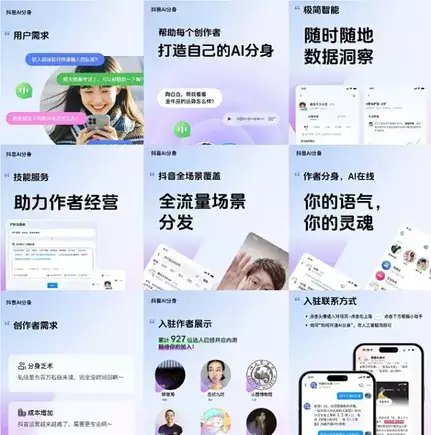As technology continues to innovate, the ways in which we interact online are undergoing a significant transformation. The emergence of virtual avatars, particularly in social media platforms, is a point of interest for industry leaders like Meta CEO Mark Zuckerberg. This development raises critical questions about the implications of artificial intelligence (AI) in our digital interactions and whether these changes signify a shift away from the authentic social engagement that has traditionally characterized online platforms.
Meta’s recent announcements highlight a compelling pivot toward AI-generated content. Zuckerberg envisions a future enriched by AI avatars that represent real users, enabling these digital representations to interact continuously, regardless of their human counterparts’ presence. This model has evolved, giving creators the ability to curate AI avatars that mirror their personality and online behavior. In this sprawling digital landscape, TikTok is following suit. The company’s Chinese counterpart, Douyin, is developing its project “V,” primarily focusing on enabling its creators to engage via AI avatars, thereby blurring the line between reality and digital persona.
Douyin’s venture into AI avatars is not an isolated phenomenon. This feature allows content creators to maintain a persistent online presence, engaging with users around the clock. The ability to converse with a virtual version of a creator not only promises convenience for users but hints at an underlying commercialization of personal interaction—a new frontier that could redefine influencer marketing.
While Meta is crafting its approach, Douyin already boasts an established framework for AI avatars, having integrated them into its operations for some time. Chinese digital avatars have garnered notable traction, especially in their ability to host live shopping events, thus fostering an environment ripe for brand partnerships. The staggering statistic of over 993,000 registered digital avatar companies in China underscores the market’s readiness to embrace these figures, indicating a robust demand for virtual personalities capable of around-the-clock engagement.
This already developed market offers Douyin a distinct advantage. The reliability and convenience of these avatars mean an increased likelihood of attracting brands eager to tap into this innovative marketing channel. Creating avatars that faithfully replicate a creator’s voice and style could enhance audience engagement and drive sales through an ongoing, interactive experience.
However, as these trends take shape, a crucial question emerges: Will western audiences embrace virtual avatars in the same manner as their Chinese counterparts? There are significant cultural differences influencing online behavior. For instance, the trend of shopping on TikTok hasn’t resonated with American consumers in the same way it has in China. The idea of engaging with virtual influencers may similarly fall flat. The essence of social media—reality—seems compromised when genuine human interaction is replaced by a series of programmed responses.
The essence of online socialization is rooted in the possibility of authentic connections. Users appreciate the chance to communicate with real people, including their personal idols. That authenticity fosters a sense of belonging and community, which risks getting diluted when replaced by AI. The idea of conversing with a bot, no matter how sophisticated, raises concerns about the genuine engagement that has underpinned social media.
Despite the undeniable allure of technological advancements, the replacement of human interactions with AI-driven experiences could eventually distill the richness of personal connection. Some people have turned to chatbots for brainstorming or clarifying their thoughts, gravitating toward this type of digital companionship. Yet substituting organic communication with AI avatars runs the risk of commodifying interactions.
Do users genuinely crave the novelty of talking to a machine? The unique engagements with fellow users, influencers, or celebrities cannot be replicated by AI counterparts. The lack of genuine emotions, personal nuances, and spontaneity makes these artificial communications appear hollow, akin to speaking into an echo chamber.
While the technological advancements in AI avatars facilitate new forms of interaction, their efficacy in fostering meaningful engagement remains questionable. As social media platforms adopt increasingly sophisticated AI models, users may initially be intrigued by the novelty. However, the sustainable success of these avatars in the western market largely hinges on their ability to replicate the heart of social interaction.
Ultimately, as digital interaction evolves, there is a pressing need to balance technological innovation with the inherent human desire for connection—an equilibrium that, if overlooked, could risk alienating users who crave authenticity amid a sea of avatars. The digital landscape may very well shift, but whether it can maintain the spirit of genuine connectivity will dictate its success in this new era of interaction.


Leave a Reply